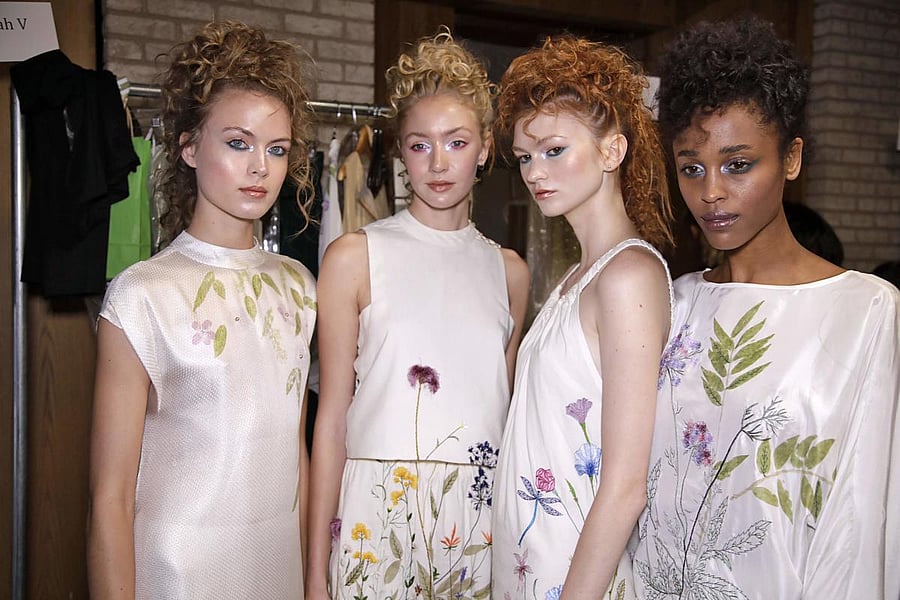
The United Nations has declared 2021-2030 a Decade of Ocean Action, calling on us to use our water resources responsibly. And the fashion industry has a significant role to play to foster what is now being called blue economy — the sustainable use of ocean resources for economic growth.
Fashion as an industry has been linked to the water bodies since 2600 BC, when dyeing was first introduced. It would later be used to decorate skin, jewellery and clothing.
Originally, dyes were made by mixing natural pigments with water and oil. Different colours often signified different geographical locations because they were extracted from locally-available plants, insects or sea life.
But today 90% of our clothing is dyed synthetically. It is estimated that over 10,000 different dyes and pigments are used industrially and over 735 tons of such dyes are produced annually worldwide.
The WHO estimates that 20% of industrial water pollution comes from textile manufacturing, which releases dyes and other chemicals into waterways in manufacturing countries and puts the local wildlife and human communities at risk.
Up to 2,00,000 tons of dyes are lost to effluents every year during the dyeing and finishing operations due to inefficiencies.
Unfortunately, most of these dyes escape conventional wastewater treatment processes and persist in the environment. The wastewater from textile plants is classified as the most polluting of all the industrial sectors.
More worryingly, some dyes are highly toxic and mutagenic. They also decrease light penetration and photosynthetic activity, causing oxygen deficiency and hindering downstream uses such as recreation, drinking water and irrigation.
Workers working with these chemicals are not always given adequate safety protection, exposing them to diseases.
Alternatives aplenty
I believe the fashion industry can solve the problem of commercial synthetic dyeing by going local, decentralising the process, and using plant-based dyes and their derivatives.
It was for the United Nations Ocean Conference 2020 that I examined the processes behind dyeing and looked for innovative solutions that could mitigate water wastage, pollution and health hazards.
The idea was to engage industry stakeholders and designers to understand that nature-based solutions held in them answers, if one had to contribute towards saving our seas.
Several innovations in this area are bringing back ancient roots such as the Indian Madder, and Turmeric.
Fungi are also cultivated for earthy hues like yellow, brown, burnt sienna and orange.
I have often experimented with natural dyes and inks, mostly extracted from petals and leaves. It was interesting to see that some hues obtained from a particular flower differ from the original colour.
For example, the red hibiscus gives a black hue when extracted by boiling while the rosy periwinkle turns indigo. Certain barks expel yellow and orange while some leaves turn up the blue colour.
Let’s talk about chlorophyll. It is a natural pigment and has the ability to bond onto natural fabrics, which is why grass stains are so difficult to remove from your linen pants after a walk in the park or when you accidentally slide down a grass patch.
Another innovative printing process is one where objects are placed on the photosensitive fabric coated with chlorophyll. By using the light and energy of the sun, the shadow or image of the object is transferred and printed directly on the fabric. This method can also be used to create a negative or positive of an image on the fabric.
It contains no added fixers or chemicals. Water used in the process is minimal, used only as a solvent for the chlorophyll inks to coat the fabric.
Such techniques harboured by scientists and indigenous people allow us to create clothes sustainably. My own experiments with design and science-based solutions have blurred the lines between fashion and biology. As an environmentalist, I have realised that every atom is interlinked. And it is only when we respect nature that we can connect the dots.
At this point, I am reminded of the collection I had done for my college graduation. The inspiration was the life cycle of a salmon fish, one that begins at the spawning grounds and moves into estuaries and blinding oceans.
As we enter the Ocean decade of innovation and sustainability in 2021, I watch the salmon while it jostles, twists and dances, migrating through the foamy waves to meet its ancient spawning grounds that have seen the sun rise for over 6 million years.
And I can’t help but wonder about the universal truth that binds us, the law of the universe, the law that permeates and creates life, the invisible law that we must heed.
The law, if we only understand, then we can see.
(The writer is a fashion designer)
